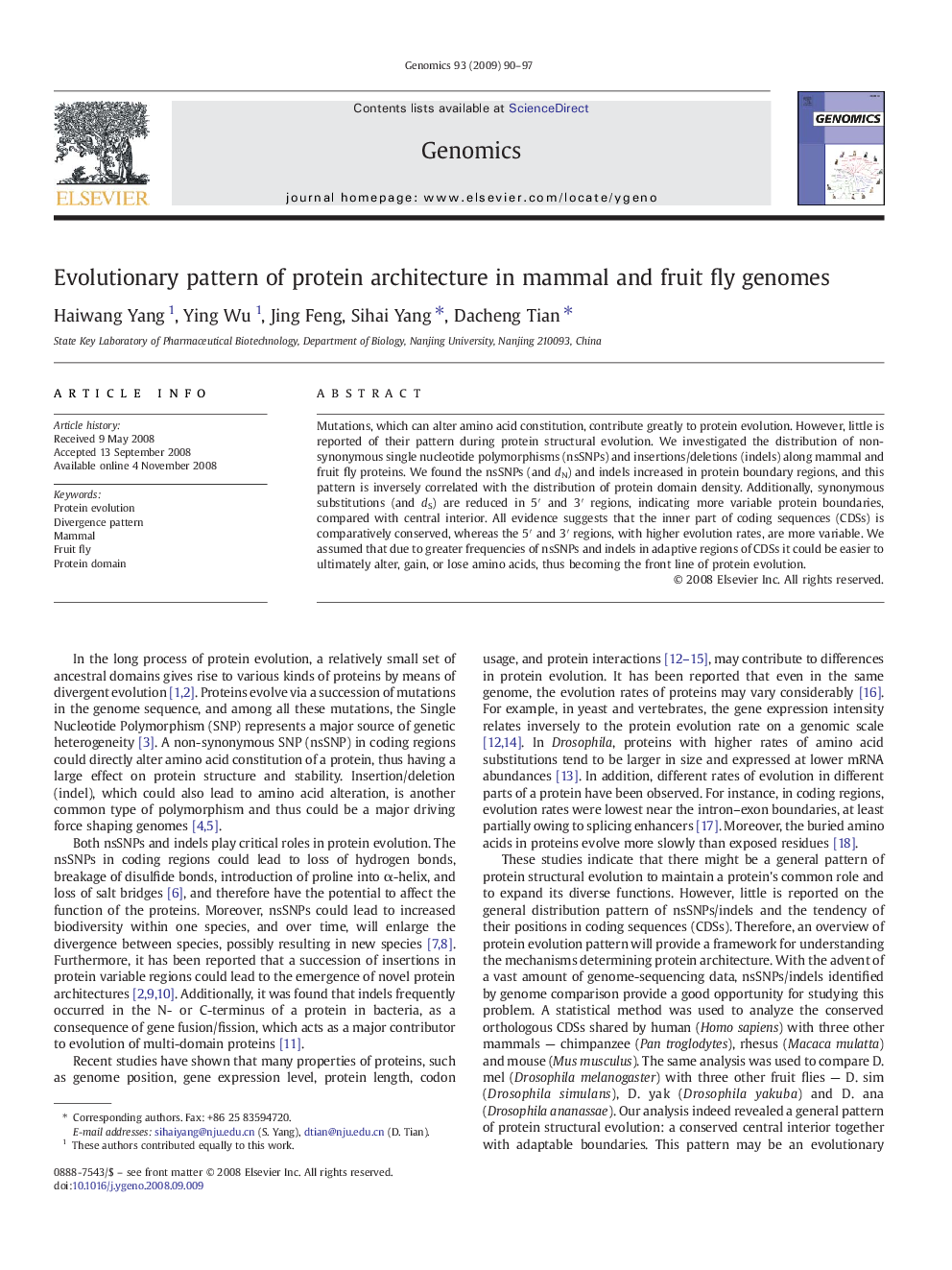| Article ID | Journal | Published Year | Pages | File Type |
|---|---|---|---|---|
| 2821652 | Genomics | 2009 | 8 Pages |
Mutations, which can alter amino acid constitution, contribute greatly to protein evolution. However, little is reported of their pattern during protein structural evolution. We investigated the distribution of non-synonymous single nucleotide polymorphisms (nsSNPs) and insertions/deletions (indels) along mammal and fruit fly proteins. We found the nsSNPs (and dN) and indels increased in protein boundary regions, and this pattern is inversely correlated with the distribution of protein domain density. Additionally, synonymous substitutions (and dS) are reduced in 5′ and 3′ regions, indicating more variable protein boundaries, compared with central interior. All evidence suggests that the inner part of coding sequences (CDSs) is comparatively conserved, whereas the 5′ and 3′ regions, with higher evolution rates, are more variable. We assumed that due to greater frequencies of nsSNPs and indels in adaptive regions of CDSs it could be easier to ultimately alter, gain, or lose amino acids, thus becoming the front line of protein evolution.
